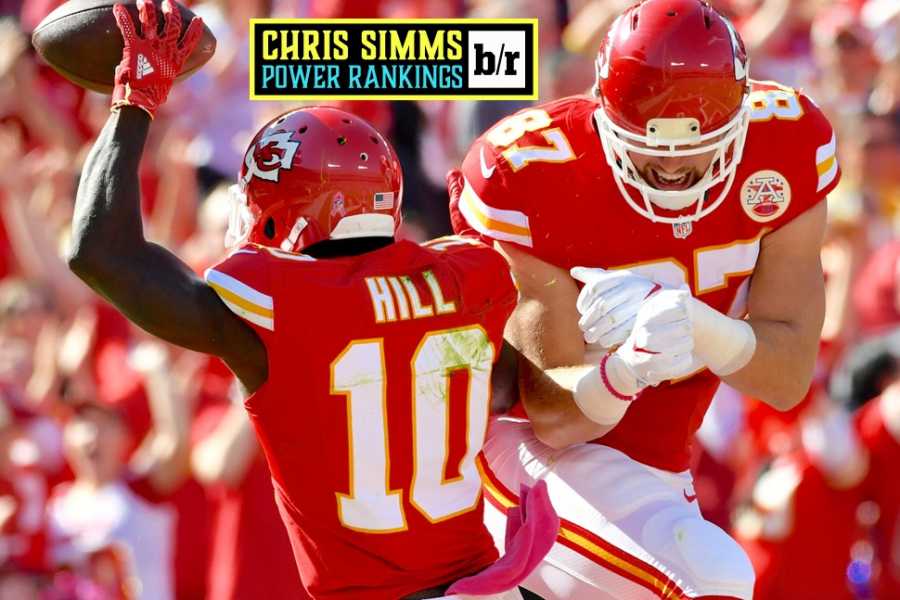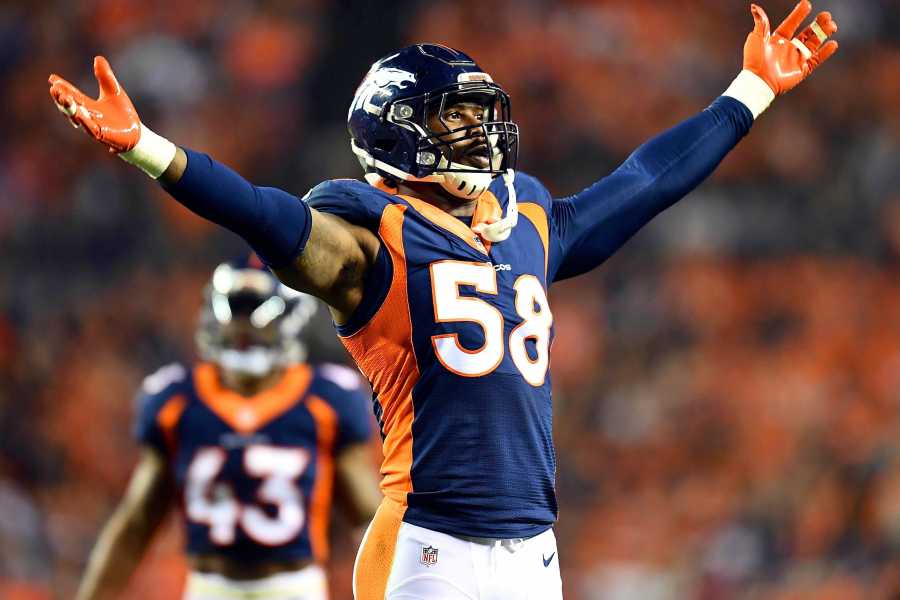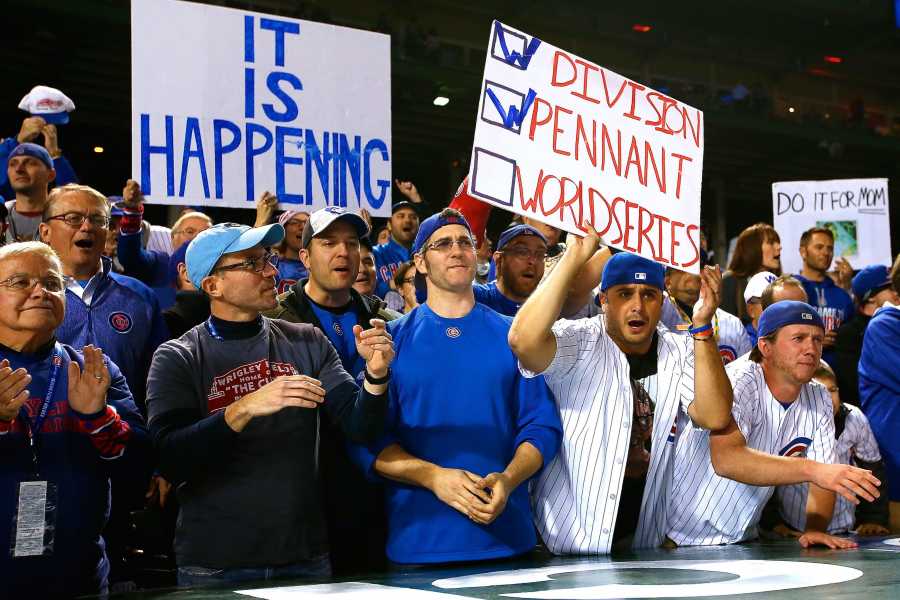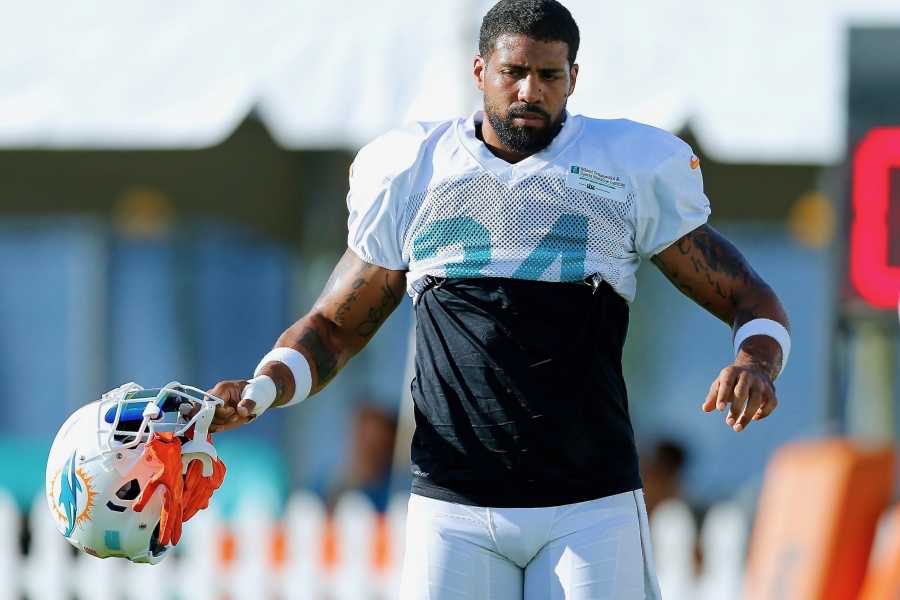
Evolution of the Starting 5
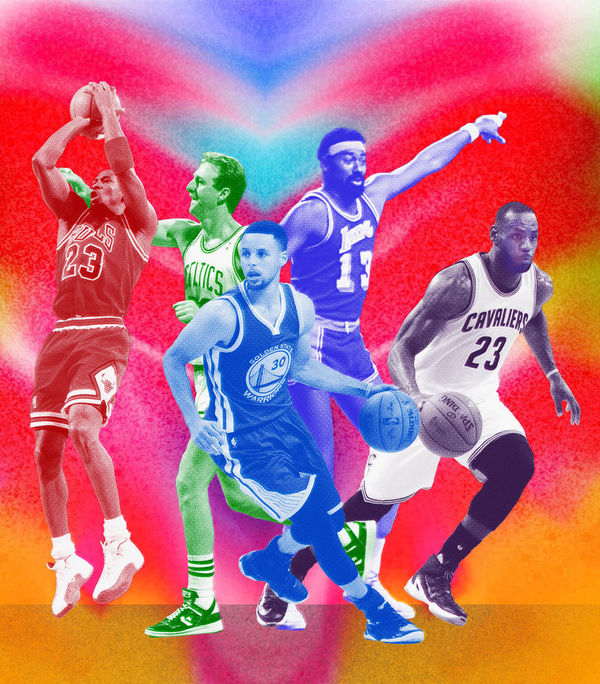
We keep hearing this sentiment, as if NBA history never happened, as if every new edition of greatness wasn’t influenced by previous editions.
You don’t get Steph Curry without Steve Nash, Klay Thompson without Jerry West, or Kevin Durant without Larry Bird. You can’t forget the seven-seconds-or-less 2004-05 Phoenix Suns, the long-and-strong mid-’90s Chicago Bulls, or the positionless 1971-72 L.A Lakers.
Gather round, friends—it’s time for a history lesson.
There’s a traceable path connecting one generation of NBA greatness to the next.
Follow along as we celebrate the players who redefined their individual positions at the extreme peaks of their craft. We identify the five players who captured what their position was all about most successfully—the “dream player” for that position each decade.
But that only gets us so far—what really matters is how you put those pieces together. The real world cares about results, so we’ve paired our dream starting fives of every era with that decade’s most dominant starting fives.
First we’ll take a look at our dream lineup for the current NBA, to set a foundation. And then we’ll work our way back to the beginning.

2010s DREAM LINEUP
The decade is not over, so perspective may surely change, but nothing has pushed change in the 2010s like the almighty three-ball. In their search to squeeze every ounce of value out of every possession, modern NBA offenses have become virtually unrecognizable from two decades ago.
Built like Karl Malone but with Iverson’s first step, LeBron James has helped push the era’s small-ball revolution forward. Shifting from small forward to power forward, he’s a one-man fast break who hits step-back three-pointers and attacks the basket with ferocious ease. Kevin Durant has similarly changed how we think about small forwards, not so much with his shooting ability, but his shooting ability in a svelte 7-foot frame.
Steph Curry has turned into a blazing ball of off-the-dribble shooting fury that would make Mark Price proud. Karl-Anthony Towns was only a rookie this past season, but he seems like the future of the center position: a silky 54/34/81 shooting split mixed with a nasty inside game. The shooting guard, once the envy of the game, now has a relatively diminished role, but Jimmy Butler’s three-and-D prowess proves the position is still relevant.
And now, a trip through NBA history.

2000s DREAM LINEUP
The growing demand for positions 1 through 4 to convert long-range shots highlighted the growing dependence on three-point shooting. Although 6’9” power forward Chris Webber never quite developed a reliable stroke from downtown, his long jumpers stretched and distorted defenses in ways that allowed him to execute remarkable passes to open teammates.
Tracy McGrady and Kobe Bryant dominated the wing spots, continuing Jordan’s tradition of isolation-basketball wizardry. O’Neal was simply an anomaly—the only center to average over 20 PPG during the 2000s compared to the previous decade, where five centers averaged above 20 PPG. At point guard, Chris Paul melded the best of Steve Nash and Jason Kidd into a singular player who could command the floor with dictatorial control, defend his opponent aggressively and shoot an incredible percentage as a scoring threat in his own right.

2000s BEST ACTUAL LINEUP
Los Angeles Lakers
The 1999-2000 Lakers dismantled the NBA for an impressive 67 wins. With Phil Jackson at the coaching helm, it should be no surprise these Lakers mimicked the 1995-96 Bulls’ use of tall wing players. With capable ball-handlers Ron Harper, Brian Shaw, Rick Fox and Bryant able to shift around from point guard to shooting guard to small forward, the Lakers avoided dependence on a traditional point guard. In the middle, O’Neal steamrolled his way to a career year and MVP honors with averages of 29.7 PPG, 13.6 RPG and 3.8 APG.
If O’Neal was bottled up, the emerging Bryant was capable of assuming the lead scoring mantle, as witnessed with his rapturous overtime performance in Game 4 of the 2000 NBA Finals. Lastly, the gang of tall wings, Robert Horry, Shaq and savvy veteran A.C. Green created a terrorizing defensive force that led the NBA in opponent field-goal and three-point percentage.


1990s DREAM LINEUP
The first half of the 1990s kept up the high-scoring ways of the ‘80s, but the NBA took a hard turn at the end of the decade, as the average team score dropped from 107.0 PPG in 1989-90 to 91.6 PPG by 1998-99. The isolation-scoring brilliance of Michael Jordan’s twisting fadeaways suddenly became the most valuable asset imaginable, as hand-checking and defensive schemes became evermore sophisticated. In Utah, a two-man game unequalled in the game’s history emerged, as John Stockton (11.9 APG in the decade) fed Karl Malone (27.2 PPG) for buckets upon buckets.
David Robinson followed Olajuwon’s footsteps—an explosive, hyper-athletic center who could run the court, swat your shot and score like an agile forward. The gangly Scottie Pippen helped shift the small forward template from the scoring dynamo to a prowling defensive stopper who could also run the offense as a point forward.

1990s BEST ACTUAL LINEUP
Chicago Bulls
The 1995-96 Chicago Bulls weren’t the first or last great team to employ nearly positionless basketball. Ron Harper, Michael Jordan and Scottie Pippen could all play point guard, shooting guard and small forward seamlessly. Sixth man Toni Kukoc was a ball-handling, long-distance-shooting small forward who could also play the 4 spot if needed. At just 6’7”, power forward Dennis Rodman could credibly guard gargantuan centers like Shaquille O’Neal. The Bulls’ most talented lineup included these five players, who all stood between 6’6” and 6’10”. Yes, they had two of the greatest to ever play the game, but amorphous personnel was the key to 72 wins.

1980s DREAM LINEUP
As NBA teams continued their search for offensive firepower, the demand for precise, high-scoring forwards exploded. Boston power forward Kevin McHale, the first and only player to score 25-plus points per game while shooting over 60 percent for a season, got his points on a variety of “Torture Chamber” moves in the post. Meanwhile, his teammate, Larry Bird, led the charge at small forward with the NBA’s first 50-40-90 season in 1986-87, as he shot 52.5 percent from the field, 40.0 percent on three-pointers and 91.0 percent from the free-throw line.
Dynamo point guards racked up assists like never before. From 1946-47 through 1978-79, there were only 12 instances of a player averaging 10-plus assists per game. There were 21 such seasons in the 1980s, including seven from Magic Johnson alone. Shooting guards remained relatively small in stature, like Milwaukee’s Sidney Moncrief, winner of the first two NBA Defensive Player of the Year Awards despite being just 6’4”. Teams increasingly prized dynamic, explosive centers like Hakeem Olajuwon, who could unleash unreal stat lines like his outing on March 10, 1987: 38 points, 17 rebounds, 12 blocks, seven steals and six assists.

1980s BEST ACTUAL LINEUP
Boston Celtics
The 1985-86 Celtics epitomized what the decade was all about: versatile backcourts and high-scoring forwards. Bird’s flexibility was the key. The sharpshooting small forward could pass like a point guard (6.8 APG) and rebound like a power forward (9.8 RPG). The Danny Ainge-Dennis Johnson backcourt was basically interchangeable, and Boston’s centers—Robert Parish and Bill Walton—had exemplary court awareness to compensate for minimal athleticism.
It helped that everyone could shoot from basically everywhere. The team finished first in three-point percentage, second in free-throw percentage and second in field-goal percentage.

1970s DREAM LINEUP
The 1970s ushered in a new wave of athleticism thanks to Dr. J’s decade-long, one-man dunking extravaganza. Erving’s athletic acumen extended all over the court, though, as he averaged a surreal, hustle-stat mixture of 10.4 rebounds, 2.1 steals and 1.7 blocks per game from 1971-1979 in the ABA and NBA.
Point and shooting guards at times became indistinguishable; Walt Frazier (PG) and Paul Westphal (SG) were the exact same size and gave their teams doses of high-pressure defense and superb offense.
Meanwhile, centers became the passing hub for offenses. From 1969-70 through 1978-79, centers averaged four-plus assists per game 33 times. (The total is 35 in all other NBA seasons combined.)
Naturally thought of as a scoring machine thanks to his iconic skyhook, Kareem Abdul-Jabbar was no exception, averaging 4.5 APG during the decade to go along with 28.6 PPG. Maurice Lucas, aka “The Enforcer,” was true to his nickname with plenty of rebounds and fights to his credit, but he was also a dangerous offensive force, averaging 17.4 points and 3.2 assists throughout the ‘70s.

1970s BEST ACTUAL LINEUP
Los Angeles
Lakers
The Lakers’ success was somewhat surprising, as they started the year 6-3 with a hobbled Elgin Baylor in the starting lineup. Baylor retired after that ninth game, and the Lakers immediately reeled off 33 straight wins, still an NBA record, after inserting Jim McMillian into the starting lineup. McMillian’s poise and ability to score off the ball jelled perfectly with the dominating presence of guards Gail Goodrich (25.9 PPG, 4.5 APG) and Jerry West (25.8 PPG, 9.7 APG). The Big Dipper (19.2 RPG) and Happy Hairston (13.1 RPG) manhandled the boards and fueled fast breaks for their teammates. If the break broke down, Chamberlain -- who played on two teams that set the NBA wins record -- could then be relied on as a pick-setter and passer (4.0 APG) to free up teammates in the half court.

1960s DREAM LINEUP
The 1960s were marked by a breakneck pace thanks to the recent introduction of the shot clock. This measure upped the excitement of the game and led then-NBA President Maurice Podoloff to call it the “most important event in the NBA.” Taking advantage of the increased speed of play, high-wire small forward Elgin Baylor introduced the notion of hang time with an arsenal of hand-switching, gliding shots around the basket. Oscar Robertson and Jerry West deployed an offensive efficiency unheard of for guards at the time, as they become two of the first three backcourt players to make 50 percent of their shots for a season.
In the frontcourt, Gus Johnson embodied the classic power forward: a big rebounder with defensive muscle. He made a name for himself as one the first aggressive dunkers by shattering backboards. In the middle, Wilt Chamberlain was the unicorn all NBA teams chased, either to stop or to imitate. There was only one Wilt—nobody will replicate his single-season records for points (50.4), rebounds (27.2) or minutes (48.5) per game anytime soon.

1960s BEST ACTUAL LINEUP
Philadelphia 76ers
Bill Russell’s Boston Celtics easily took home the most titles in the 1960s, but Chamberlain’s 1966-67 Sixers posted the best single-season record with 68 wins. Philly was a fearsome, balanced squad without a true point guard. Four players averaged at least 18.5 PPG, as
Chamberlain led the way with averages of 24.1 points, 24.2 rebounds and 7.8 assists per game while shooting 68.3 percent from the field. Bruising power forward Luke Jackson co-anchored the paint with Chamberlain. In the backcourt, combo guard Hal Greer kept defenses honest with what author Wayne Lynch called a “killer 15-foot jumper” (via Philadelphia Weekly’s Tim Whitaker), small forward Chet Walker was a virtuoso one-on-one scorer whenever the offense broke down, Wali Jones was the precursor to Jamal Crawford, and sixth man Billy Cunningham was an agile, pogo-stick forward off the bench who could slither in for scores.
The Golden State Warriors, like many great teams before them, are simultaneously a continuation of and a departure from NBA history. They are the latest in the vanguard of Voltron-like players whose skill sets easily transcend positions, undermining not just teams they face but orthodox conceptions of basketball.
Like all of the previous great teams, though, the Warriors’ greatness won’t last forever.
So how will the Warriors be stopped and overtaken by the next trailblazing squad? It’s hard to imagine, especially since we never saw the Warriors’ own rise coming. Who among us just five years ago could have foreseen the volume or efficiency of Curry and Thompson’s three-point shooting? Or Draymond Green going from second-round afterthought to All-NBA defensive ace and top-tier dime machine? And Kevin Durant spurning Oklahoma City to make Golden State even more inimitable?
We couldn’t predict the rise of Oscar Robertson, Larry Bird or the other hosts of legends, either. We can, however, rest assured that the game won’t stand still, that luminaries of their caliber are just around the bend. Like Wilt, MJ, and Dr. J, these players continue redefining basketball’s ceaseless revolution.
